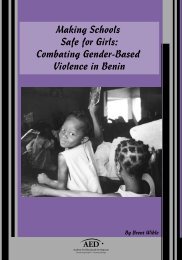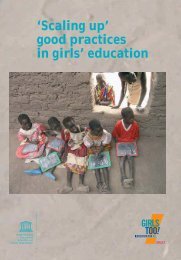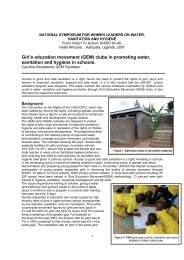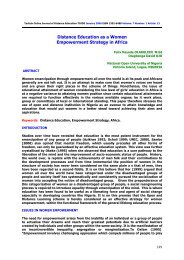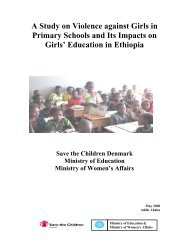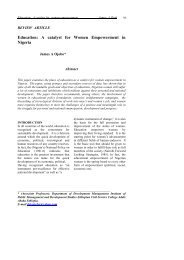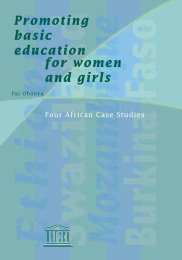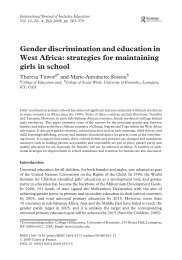GIRLS EDUCATION MOVEMENT South Africa
GIRLS EDUCATION MOVEMENT South Africa
GIRLS EDUCATION MOVEMENT South Africa
Create successful ePaper yourself
Turn your PDF publications into a flip-book with our unique Google optimized e-Paper software.
ISSUEA better <strong>South</strong> <strong>Africa</strong>In today's <strong>South</strong> <strong>Africa</strong>, girls and boys stand abetter chance to develop and prosper. Sincethe birth of the new democracy in 1994, thecountry’s economy has grown significantly atan average of 4.5 percent and individual freedomand liberties have been vastly expanded.<strong>South</strong> <strong>Africa</strong> is now a middle-income economywith a strong emerging market, an abundantsupply of natural resources, well-developedfinancial, legal, communications, energy andtransport sectors and a stock exchange thatranks among the ten largest in the world. The<strong>South</strong> <strong>Africa</strong>n Constitution, built on an acuteawareness of the injustices of the past, iswidely regarded as the most progressive in theworld.Dashed hopes for manyThe prospect of a bright future is however outof reach for many of <strong>South</strong> <strong>Africa</strong>’s children.The country’s economic growth has not beenable to tame unemployment, which was estimatedat 25.2 percent in 2005. Daunting problemsremain from the apartheid era – especiallypoverty and the lack of economic empowermentfor <strong>South</strong> <strong>Africa</strong>ns from previouslydisadvantaged backgrounds.“Resources have been poured into schools inorder to ensure equal treatment. However, resourcesare not enough…research indicatesthat we are not seeing the outcomes in termsof quality education that were anticipated.”Government schools grapple with many challengesincluding a poor quality of education,high attrition rates, low teacher morale, thedevastating impact of HIV and AIDS, poor infrastructure,inadequate water and sanitationand poor mechanisms for inclusive educationparticularly for children with disabilities. Manylearners from poor families go to school hungry.Girls and young women still report highlevels of sexual abuse, harassment, exploitationand murder in their schools.FACTS & FIGURES96% of <strong>South</strong> <strong>Africa</strong>n children aged 7–13 areenrolled in primary education.70% of children aged 14–17 go to secondaryschool.9% of school-aged children repeat a grade inprimary school.In 2004/05, there were more than 55,000 reportedrapes in <strong>South</strong> <strong>Africa</strong>.40% of reported rapes were committedagainst children during 2004/05.10.2% of young <strong>South</strong> <strong>Africa</strong>ns aged 15–24are infected with HIV.Girls and women are four times more likely tobe HIV-positive than boys and men.Sources: UNICEF and the <strong>South</strong> <strong>Africa</strong>n Police Service.Key challenges to girls’ educationGender Inequality: <strong>South</strong> <strong>Africa</strong>n society is toa large extent patriarchal. Girls and women areaccorded lower social status and find themselvesunder the control and authority of men.The high levels of gender-based violence andthehigher HIV infection rates among girls andwomen are tragic consequences of female disempowerment.Girls are socialised to becomehome keepers and child-bearers, placing lessvalue on their educational attainment. Whengirls perform well in subjects such as maths orscience, they are not encouraged nor do theyhave the confidence to pursue careers that relyon these skills.Safety and Security: Many schools are notchild or girl friendly. Some are situated far fromhomes, exposing girls to danger when theywalk to and from school. Girls are at risk of beingsexually harassed and exploited in schoolsby teachers and fellow students.<strong>GIRLS</strong> <strong>EDUCATION</strong> <strong>MOVEMENT</strong> <strong>South</strong> <strong>Africa</strong> 1



